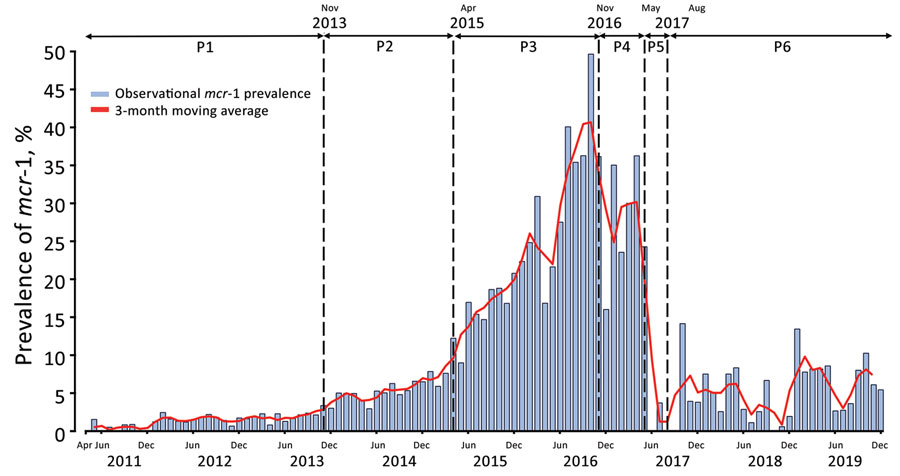Volume 27, Number 9—September 2021
Research Letter
Prevalence of mcr-1 in Colonized Inpatients, China, 2011–2019
Figure

Figure. Time series of monthly mcr-1 prevalence in colonized inpatients, China, April 2011–December 2019. The mcr-1 prevalence was recorded each month in observed data (blue histogram) and 3-month moving average data (solid red line). Vertical dashed lines indicate significant changepoints identified in the changepoint analysis: November 2013, May 2015, November 2016, May 2017, and August 2018. The government of China formally banned colistin as an animal feed additive on April 30, 2017. P, time period.
1These authors contributed equally to this article.
Page created: July 22, 2021
Page updated: August 18, 2021
Page reviewed: August 18, 2021
The conclusions, findings, and opinions expressed by authors contributing to this journal do not necessarily reflect the official position of the U.S. Department of Health and Human Services, the Public Health Service, the Centers for Disease Control and Prevention, or the authors' affiliated institutions. Use of trade names is for identification only and does not imply endorsement by any of the groups named above.